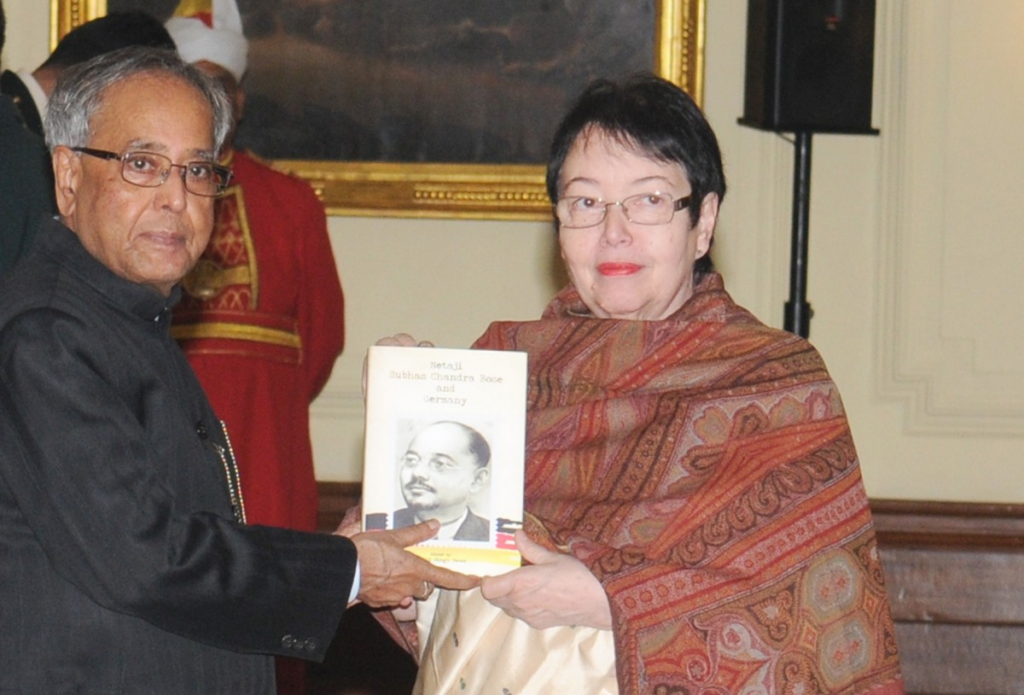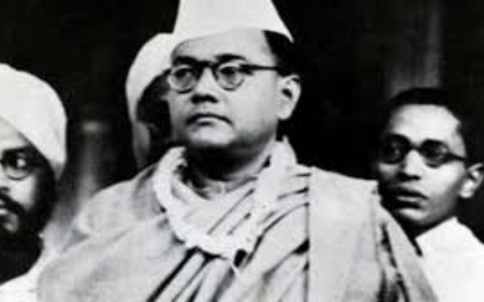Prof Madabhushi Sridhar, School of Law, Mahindra University
Most government files related to Netaji Subhas Chandra Bose’s mysterious disappearance were kept secret until three major rounds of declassification. First, it was the UPA government that declassified several files in 2010 and released over 10,000 pages related to the functioning of the Justice Mukherjee Commission of Inquiry.
The second round took place when Bengal Chief Minister Mamata Banerjee declassified 64 files in 2015. Chandrachur Ghose and Anuj Dhar, were part of the pressure group called Mission Netaji which campaigned for the transparency, that fructified in this first two rounds of declassification. Without stopping there, Ghose, along with Anuj Dhar, relentlessly pursued the declassification of the Netaji files further by filing several RTI requests under the Right to Information Act 2005. Their meticulous scrutiny of those documents revealed that the Central and the Bengal governments were snooping on everyone associated with Bose until the 1970s; the resultant outcry led the Narendra Modi government to release 303 files on 23 January 2016.

According to Ghose, these declassified files clearly establish that contrary to the official version of Netaji perishing in an alleged plane crash on 18 August 1945 at Taihoku (Taiwan), Bose returned to India in the early 1950s and continued to live in anonymity till his death in 1985. To his followers,
Gumnami Baba and Subhash Chandra Bose
among whom were former top Bengali revolutionaries and an intelligence officer of the Indian National Army, Bose claimed that he was not interested in political life but that he was involved in global geopolitics to serve India’s best interests. He claimed that he had formally taken sanyas.
Though there is enough circumstantial evidence to prove that Netaji Subhash Chandra Bose and the unseen holy man Gumnami Baba was the same person, the political groups are not interested in bringing out the truth, claimed an investigative author Chandrachur Ghose at the School of Law.
Ghose, a founder member of’ Mission Netaji’, a five-member group that probed into the disappearance of Bose, has authored two books on Netaji. Chandrachur, with his fellow researcher from Mission Netaji, Anuj Dhar penned a bestselling book,” Conundrum: Subhas Bose’s Life after Death” (2019), which was adapted into a film called” Gumnami” in the same year. Through his well-researched monograph,” Bose: The Untold Story of an Inconvenient Nationalist”, (Penguin: February 2022), Ghose probed further into the details of Netaji’s early political life and the relevance of Netaji’s examplary political thought in the present times.

Anita Bose, Netaji’s daughter, appealed to the then President Pranab Mukherjee to get her fathers ashes to India.
From his in-depth study and heaps of declassified documents, Ghose arrived at the conclusion that Gumnami Baba was none other than the enigmatic national leader Subhas Chandra Bose. He exposed that the DNA and handwriting tests in government laboratories were fudged. His first book gave historical details with documents that formed part of declassified files. Chandrachur and Anuj collected plenty of evidence, like independent opinions from national and international experts, which disprove the official claims of the Indian government about the Taihuku (Taiwan) plane crash theory that killed Bose. Ghose reiterated that the declassified secret documents and accounts of those who visited the mysterious holy man of Faizabad prove that Netaji and Gumnami Baba was the same individual.
DNA & Handwriting Mismatch: A Debatable Report
Ghose analyzed that Justice Mukherjee Commission of Inquiry found credible evidence to support the claim that Bose returned to live in India, but hesitated to conclude the same because of a shortage of clinching evidence. The two biggest obstacles in proving the claims were DNA reports and handwriting analysis reports from government laboratories that opined that samples from the unnamed saint, also known as Gumnami Baba, did not match Bose’s.
Ghose began by introducing Netaji’s political career and his rise to higher ranks of the Indian National Congress. Through his monograph, he revealed Netaji’s unconventional style of politics, which belied all existing mainstream trends of Indian national politics. He opposed the incrementalism of the Gandhian Congress, the doctrinaire politics of the Communist Party, and communalism in politics and prioritized national interest over abstract political and moral theory in his demand for complete independence. This made him’ inconvenient’ to almost all the political groups in the country. However, both the authors vehemently argued that it was Netaji’s valour and fight through INA that scared the British Government and compelled them to get out of India, and not because of exhausted leadership of Congress led Indian Independence Movement.
Journalist MVR Sastry questions this argument
While this was result of the investigation of Ghose, a leading journalist MVR Sastry asked why don’t they agree that Gumnami Baba was Netaji?
He emphasized that the historic aspects to confirm that Bose died in the ominous plane crash in Taihuku (Taiwan) on 18 August 1945. While noting that almost 78 years have passed since the plane crash, Sastry felt deeply pained as no serious action has been taken to bring back Netaji’s ashes by any government in all these years. Netaji is the only hero who has just date of birth but no date of death, and 126th birth anniversary, he called for a coordinated campaign to create pressure on the present government, bring back the ashes from the Renkoji temple in Japan, and conduct a DNA test.

He reiterated that between 1945 and 1974, almost ten investigations took place which were conducted by the British Army, by the Allied Command based in Japan, the Government of British India, the Governments of Japan and Formosa, followed by commissions appointed by the Government of India, and also by individual journalists and Hindi cinema’s tryst with Netaji
followers of Bose and all of them concluded that Netaji died on the fateful night of 18 August 1945, after third-degree burn injuries due to air crash.
While sharing his apathy towards the official version of the plane crash theory, Mr. Sastry also raised concern over how few authors have given rise to various conspiracy theories on the death and reappearance of Subhas Chandra Bose. He demands that the ashes of Netaji be brought back to India and kept in the Red Fort and tricolor be hurled above it so that the mysteries surrounding Netaji’s death are removed forever and the leader gets his due from the people of his motherland. MVR Sastry’s well-researched narrative about Bose’s determined character and his resolution to free his motherland from the shackles of the British Raj created an urge among the people to explore further details about the incredible contributions of the forgotten hero.
However, Mr. Sastry’s conviction about the plane crash theory in 1945 was contested by Dr.Paromita Das Gupta, a history faculty at the School of Law. Dr. Das Gupta, based on the study of the Mission Netaji group including Chandrachur Ghose and Anuj Dhar, raised some pertinent questions regarding the authenticity of the plane crash theory since no inquiry commission had ever visited the crash site and collected data from ground zero. She was particularly interested in understanding why the passenger list of the fateful flight which is supposed to have killed Netaji was not found yet, why Netaji’s co-passenger and his closest aide Habibur Rahman who also planted the crash theory, never had a scratch on his body despite a shocking plane crash that caused third-degree burns to which Netaji succumbed in 1945. Doubts were raised by the historian about the authenticity of the death certificates issued in 1956 and as late as 1988 for allegedly the same individual but with two different names.
Appreciating the questions, Sastry took these questions and stated that there was circumstantial evidence to prove that Netaji died in a plane crash and bring closure to this long-running disappearance saga of a leader who delivered his promise: a Free India through strategies that appeared to be unacceptable to his contemporaries, but that captured the essence of our great national leader. Netaji’s mantra was: “Give blood, I will give freedom”, and he kept the promise.




